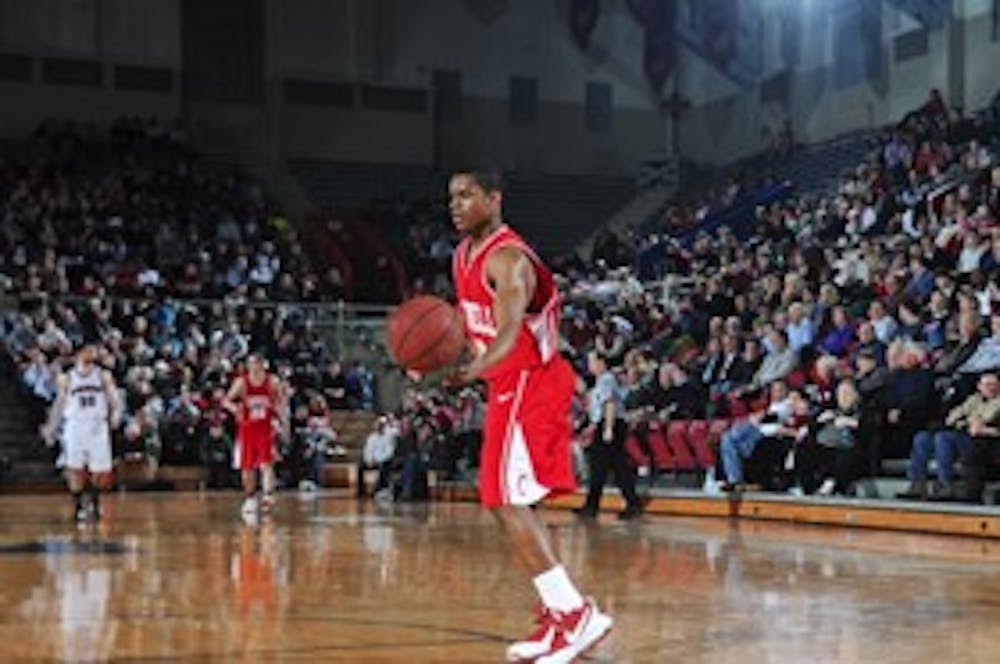
In 1979, the ninth-seeded Penn men’s basketball team made a miracle run that culminated in a Final Four appearance.
The following year, the NCAA voted to expand the field from 40 to 48 teams. Due to the larger field and other rules changes, 1980 marked the beginning of the modern NCAA Tournament.
Since then, no Ivy League team has made it past the second round.
Until now.
With this weekend’s victories over Temple and Wisconsin, Cornell became the first Ivy squad to reach the Sweet 16 in the modern era. But the accomplishment transcends coach Steve Donahue’s squad; the 2010 Big Red may have changed the Ivy League forever.
Gone are the assumptions that the Ivy League can no longer compete on the national stage. Gone are the arguments that athletic scholarships are necessary to beat major conference teams, and gone is a great deal of the League’s basketball obscurity.
“I think it’s good for the League,” said Penn sophomore pointguard Zack Rosen. “They mention the Ivy League all the time on the broadcast and they show that an Ivy League team can go to the Sweet 16 or play at this level.”
Even more impressive than the Big Red’s presence in the Tournament’s second weekend is how they did it. They didn’t squeeze past No. 5 Temple and No. 4 Wisconsin; they dominated them.
From the opening whistle to the final buzzer in each game, they played less like a Cinderella squad and more like the No. 4 seed that Syracuse coach Jim Boeheim said they deserved after his team narrowly won over the Big Red.
“They didn’t just beat Wisconsin, they beat them by 20 points,” Rosen said. “It wasn’t even a game. What they’re doing now is proving … that it’s the guys that are playing together and playing hard that are going to win.”
Perhaps these dominating performances will make the NCAA selection committee reconsider the 12-seed they gave Cornell. Now that the Big Red have shown that Ivy league teams can compete on the biggest stage, they may no longer be subject to double-digit seeds after just one conference loss.
And besides proving their worth to the committee, the Big Red have also generated buzz across the nation. Now, sports fans everywhere know that Cornell has the highest three-point shooting percentage in the nation. Likewise, Dale, Wittman, and Foote are becoming household names.
The Big Red is getting so much media coverage that even a casual viewer of this weekend’s action must know by now that 13 of the team’s players all live together in one house.
With a raised profile among the general public and basketball elite, however, comes loftier expectations.
Cornell’s success will raise the bar for every other team in the conference, especially Penn. If history is any indication, the Quakers — who have won or shared seven of the past 11 Ivy league titles — will at some point return to the top of the league. For the next great crop of players, though, conference titles may not be enough.
Cornell is showing that the back-to-back-to-back Ivy titles of the recent Ibrahim Jaaber and Mark Zoller Quakers were by no means maximal success. Nor was the 2002 Big 5 title won by Ugonna Onyekwe’s Quakers. Not even Jerome Allen and Matt Maloney’s 1994 Tournament victory over Nebraska or Princeton’s 1998 win over University of Nevada, Las Vegas can be considered the relative Ivy ceiling.
The excuses are gone. Cornell has shown that Ivy League teams can compete with anyone in the country not only in the regular season, but in March when the stakes are the highest.
Ancient Eight, welcome to the Modern Era. Things may never be the same.
The Daily Pennsylvanian is an independent, student-run newspaper. Please consider making a donation to support the coverage that shapes the University. Your generosity ensures a future of strong journalism at Penn.
DonatePlease note All comments are eligible for publication in The Daily Pennsylvanian.








